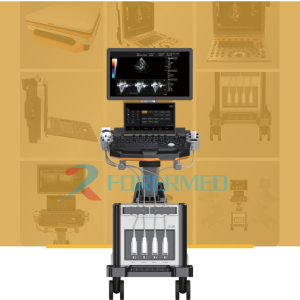Echocardiography: Unveiling the Mysteries of the Heart
Introduction:
Echocardiography, also known as cardiac ultrasound, is a crucial imaging technique used to assess the structure and function of the heart. By utilizing ultrasound imaging technology, it provides a non-invasive and real-time method to observe and analyze cardiac motion and blood flow. This article delves into the functionalities of echocardiography and highlights its significance in clinical diagnosis and treatment.

-
Principles and Techniques of Echocardiography:
Echocardiography utilizes the echoes of ultrasound waves to create images of the heart. It involves emitting high-frequency sound waves towards the heart and recording the echoes produced as they interact with cardiac tissues, resulting in the formation of images. This technique provides detailed information about the heart, including chamber size, myocardial thickness, valve function, and blood flow patterns. -
Assessment of Cardiac Structure and Function:
Echocardiography allows for a comprehensive evaluation of the heart’s structure and function. It provides detailed measurements of chamber dimensions, enabling the assessment of cardiac size and potential abnormalities. Additionally, it enables the visualization of cardiac walls and the detection of any thickening or thinning, indicating potential cardiac diseases. Echocardiography also plays a vital role in assessing valve function, identifying any regurgitation or stenosis. Furthermore, it allows for the assessment of myocardial contractility, providing information about the heart’s pumping ability. -
Evaluation of Cardiac Hemodynamics:
One of the key functionalities of echocardiography is the assessment of cardiac hemodynamics. It enables the visualization and quantification of blood flow patterns within the heart and major vessels. By utilizing Doppler ultrasound, echocardiography can measure the speed and direction of blood flow, assisting in the diagnosis of conditions such as valvular disorders, congenital heart defects, and cardiac shunts. It also aids in assessing the presence and severity of conditions like heart failure, pulmonary hypertension, and cardiac ischemia. -
Role in Cardiac Disease Diagnosis and Management:
Echocardiography plays a pivotal role in diagnosing various cardiac conditions. It assists in the identification of structural abnormalities, such as congenital heart defects, cardiomyopathies, and tumors. The technique also aids in the diagnosis and evaluation of valvular diseases, including mitral valve prolapse, aortic stenosis, and regurgitation. Echocardiography is valuable in assessing the overall cardiac function, guiding treatment decisions, and monitoring the progression of cardiovascular diseases. -
Advancements and Variations in Echocardiography:
With technological advancements, echocardiography has evolved to offer advanced imaging modalities. These include stress echocardiography, which evaluates heart function during exercise or pharmacological stress, and transesophageal echocardiography, which provides detailed images from the esophagus, offering enhanced visualization of cardiac structures. Additionally, three-dimensional echocardiography provides a more comprehensive assessment of cardiac anatomy and function, further improving diagnostic accuracy.
Conclusion:
Echocardiography serves as an invaluable tool in assessing the structure, function, and hemodynamics of the heart. Its non-invasive nature, real-time imaging capabilities, and wide range of applications make it an essential component of cardiovascular diagnostics and patient management. Echocardiography empowers healthcare professionals with vital information to diagnose cardiac conditions, guide treatment plans, and monitor the progress of cardiovascular diseases, ultimately contributing to improved patient outcomes.

